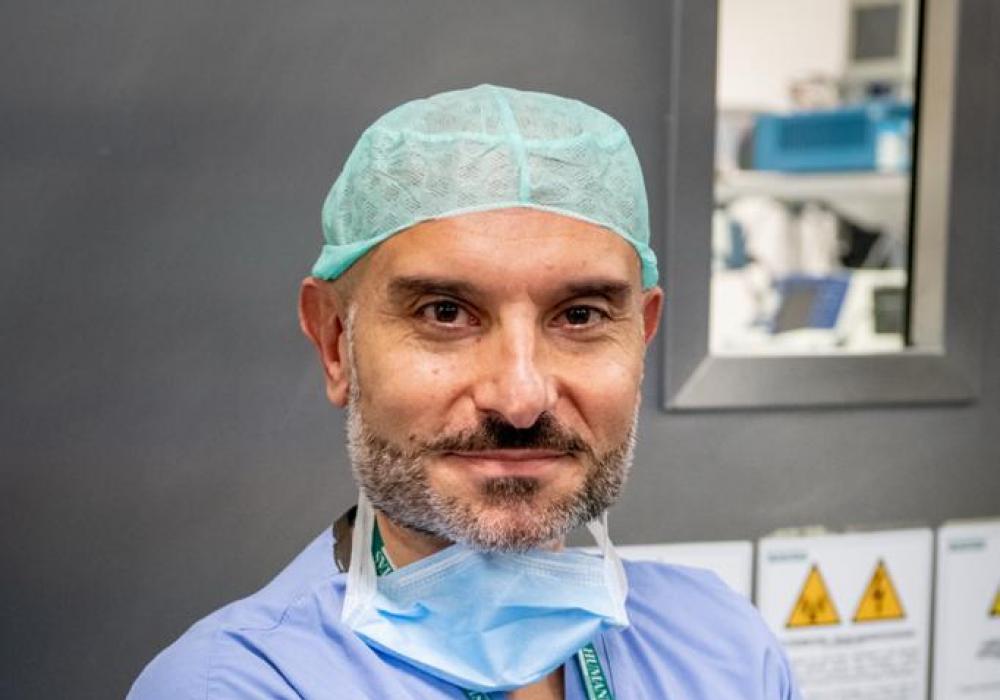

Heart surgery and robotHeart
Guarda il video integrale dell’incontro con Alfonso Agnino tenutosi in STEP FuturAbility District nell’ambito del programma scientifico culturale.
In the 4th century BC, Archita from Tarentum, a philosopher and mathematician from the Pythagorean school, built a wooden flying dove that, when placed on a tree, was able to fly from branch to branch. "Archita's invention is often cited as the first robot in history."
If today it is possible to operate on a human heart and give new life to a patient, giving them both the possibility of not feeling pain and not bearing the obvious cosmetic marks of the surgery on them, thus allowing them a much faster psychophysical functional recovery, it is also due to that steam dove.
Robots in heart surgery represent the most modern evolution of the minimally invasive concept. This device enhances the human senses, and through it, the cardiac surgeon has the perception of physically entering the heart chambers and operating with extreme precision to the utmost of their sensory capabilities. At the same time, however, while the robot presents itself as an efficient device that can be exploited, it should not be forgotten that it is still a machine. Yes, it is true, we are travelling at an extremely high speed, but this acceleration requires absolute mastery of technology to avoid losing what makes a doctor such a doctor, that irreplaceable element that allows them to heal their patients: empathy.
Dr Alfonso Agnino is head of the Robotic and Minimally Invasive Heart Surgery Unit at Humanitas Gavazzeni-Castelli in Bergamo, Italy, as well as a lecturer in the Pathophysiology of Extracorporeal Circulation in Heart Surgery at the Università Città della Salute in Turin. He trained in France at the University-Hospital Centre in Rennes, where he served as Assistant-Chef de Clinique. Upon returning to Italy, he worked as an assistant at the Sant'Anna Clinic in Catanzaro and then became the first Head of Cardiac Surgery at Santa Maria in Bari and then the director of the Cardiovascular Department also at Sant'Anna in Catanzaro. He has more than 5,000 heart surgeries as the leading surgeon under his belt, of which 1,000 were by minimally invasive and robotic techniques. He is a member of the EACTS (European Association for Cardiothoracic Surgery) robotic heart surgery task force. He also penned more than 100 publications in scientific journals and national and international conferences.
Programme appointments must be booked and this can be done online, subject to availability.
La cura del futuro: Humanitas Gavazzeni fa scuola con il robot del cuore
Il tema dell’intervento del dottor Agnino sarà focalizzato sulle sfide future della cardiochirurgia, in cui la robotica sarà sempre più protagonista, inaugurando il mese di settembre dedicato alla prevenzione delle malattie cardiovascolari.
Il tema dell’intervento del dottor Agnino sarà focalizzato sulle sfide future della cardiochirurgia, in cui la robotica sarà sempre più protagonista, inaugurando il mese di settembre dedicato alla prevenzione delle malattie cardiovascolari. Era il 2019 quando Humanitas Gavazzeni di Bergamo divenne il primo centro italiano ad attivare un programma di cardiochirurgia robotica: ora, a distanza di tre anni, sono oltre cento i cuori che sono stati curati per insufficienza mitralica dal “robot del cuore” guidato dal dottor Agnino e la sua equipe. Un traguardo raggiunto nonostante l’impegno mantenuto durante la pandemia di Covid-19 che ha così duramente colpito il territorio bergamasco.